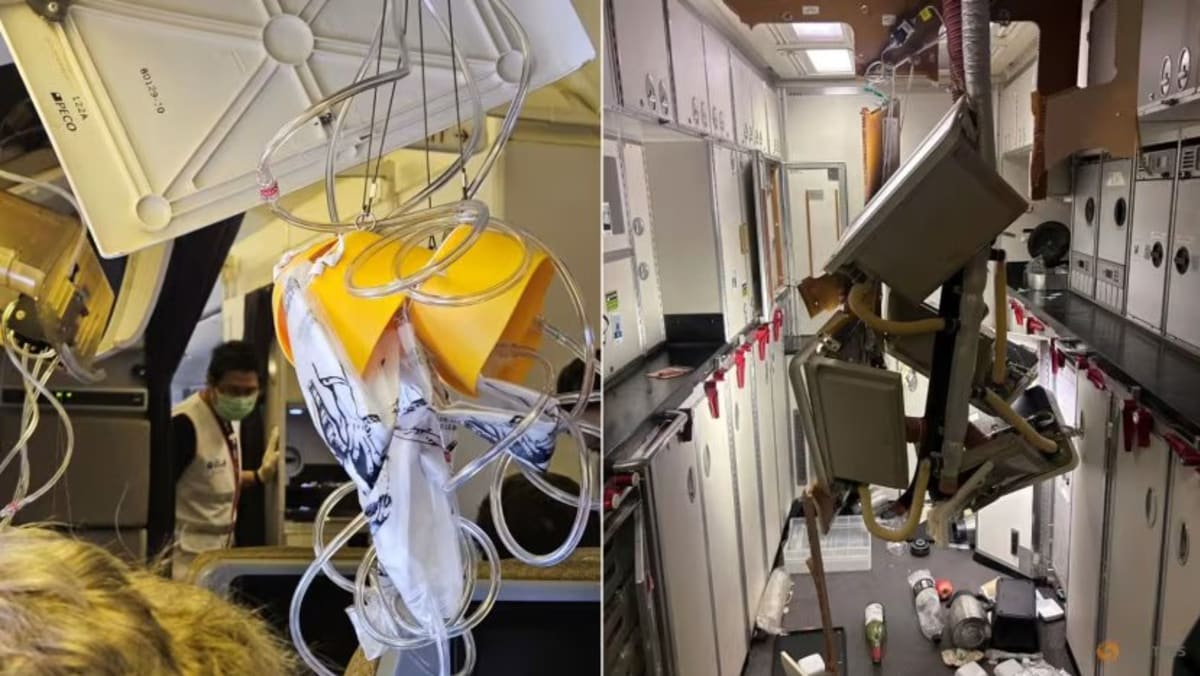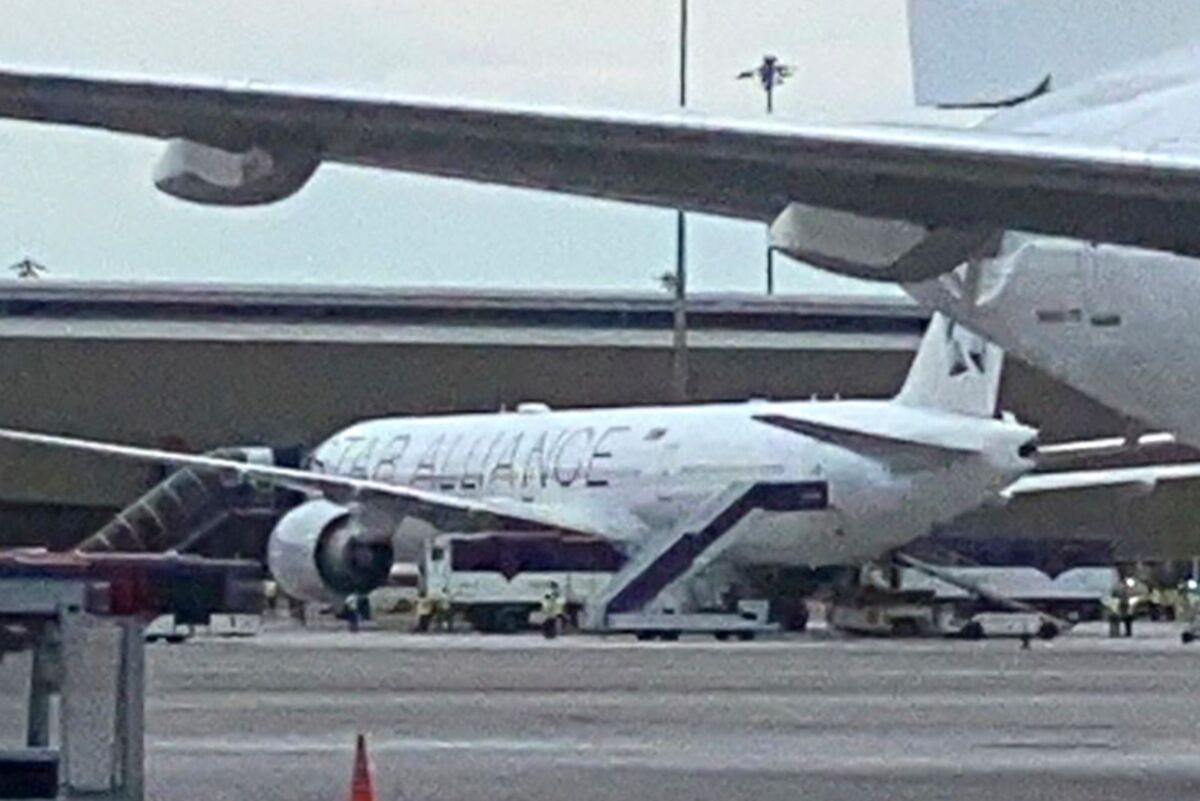Incidents and Causes of Turbulence

Singapore airlines turbulance – Turbulence, an unavoidable aspect of air travel, can significantly impact the comfort and safety of passengers aboard Singapore Airlines flights. Understanding the types, causes, and contributing factors of turbulence is crucial for ensuring a smooth and enjoyable flight experience.
The recent turbulence experienced by Singapore Airlines passengers has raised concerns about the safety of air travel. While the airline has a good safety record, the incident has prompted calls for an investigation into the causes of the turbulence. Some experts have suggested that the turbulence may have been caused by a combination of factors, including wind shear and downdrafts.
Others have speculated that the incident may be related to the infected blood inquiry that is currently underway in the United Kingdom. The inquiry is investigating the contamination of blood products with HIV and hepatitis C in the 1970s and 1980s, which led to the deaths of thousands of people.
The inquiry has heard evidence that the government and health officials knew about the risks of contamination but failed to take action to prevent it. The Singapore Airlines turbulence incident has raised questions about whether the airline industry is doing enough to ensure the safety of its passengers.
Turbulence is primarily caused by changes in air pressure and wind speed. These variations can result from various meteorological conditions, including:
Meteorological Conditions, Singapore airlines turbulance
- Clear-air turbulence (CAT): Occurs in clear skies without visible clouds or weather fronts. It is caused by wind shear, where air currents moving at different speeds and directions collide.
- Convective turbulence: Associated with thunderstorms and cumulus clouds. Warm, rising air creates updrafts and downdrafts, leading to bumpy conditions.
- Frontal turbulence: Occurs at the boundary between two air masses with different temperatures and densities. The collision of these air masses creates turbulence.
Aircraft Design and Flight Paths
Aircraft design and flight paths also influence the severity of turbulence experienced:
- Aircraft size and shape: Larger aircraft are generally more stable and less susceptible to turbulence than smaller ones.
- Wing design: Wings with flexible trailing edges can bend and adjust to changing airflows, reducing turbulence.
- Flight path: Pilots can adjust their flight paths to avoid areas with known turbulence, such as thunderstorm cells or mountainous regions.
Impact on Passengers and Crew: Singapore Airlines Turbulance

Turbulence can have a significant impact on both passengers and crew members. Physically, passengers may experience discomfort, nausea, and even injuries in severe cases. Psychologically, turbulence can cause anxiety, fear, and disorientation.
Singapore Airlines’ recent turbulence woes have raised concerns about the safety of air travel. While the airline has maintained that the incidents were caused by isolated weather events, some experts have pointed to the increasing frequency of extreme weather events, such as the recent tornado iowa , as a potential contributing factor.
The impact of climate change on air travel is still being studied, but it is clear that the industry will need to adapt to a changing climate.
Singapore Airlines crew members are highly trained to manage turbulence. They undergo rigorous training in simulator exercises and real-life scenarios to learn how to anticipate, respond to, and mitigate the effects of turbulence. During turbulence, crew members follow established procedures to ensure the safety of passengers and themselves. These procedures include securing loose items, monitoring passenger well-being, and providing clear instructions.
The turbulence on Singapore Airlines flights may seem daunting, but it’s nothing compared to the destructive force of the Iowa tornados . These twisters have the power to uproot trees, demolish buildings, and leave a trail of devastation in their wake.
Fortunately, Singapore Airlines has a strong safety record, and its pilots are trained to handle even the most challenging weather conditions. So while the turbulence may be a bit unsettling, rest assured that you’re in good hands.
Accounts of Significant Turbulence Events
There have been several notable incidents of significant turbulence involving Singapore Airlines flights. In 2015, Singapore Airlines Flight SQ368 encountered severe turbulence over the Bay of Bengal, resulting in injuries to several passengers and crew members. In 2017, Singapore Airlines Flight SQ864 experienced turbulence over the Pacific Ocean, causing a passenger to be seriously injured.
These incidents highlight the importance of proper training and procedures for managing turbulence. Singapore Airlines’ commitment to safety has been instrumental in minimizing the impact of turbulence on its passengers and crew.
Safety Measures and Protocols
Singapore Airlines places the utmost importance on passenger safety and has implemented comprehensive safety measures to mitigate the risks associated with turbulence.
Despite its reputation for safety, Singapore Airlines has experienced its share of turbulence. In 2018, a flight from Singapore to London encountered severe turbulence, causing injuries to several passengers. While such incidents are rare, they can be harrowing for those involved.
As the plane lurched and shook, some passengers may have felt like they were in the clutches of the smashing machine , a relentless force that threatened to tear them apart. Fortunately, the pilots were able to regain control of the aircraft, and the flight landed safely in London.
Nevertheless, the experience serves as a reminder that even the most experienced airlines are not immune to the dangers of turbulence.
The airline employs advanced technologies and systems to detect and avoid turbulence, including:
Turbulence Detection and Avoidance
- ClearAir Turbulence (CAT) radar: Detects turbulence ahead of the aircraft, providing ample time for pilots to adjust the flight path.
- Weather radar: Monitors weather conditions and identifies areas of potential turbulence.
- Aircraft performance monitoring systems: Collect data on aircraft movement and provide real-time alerts about potential turbulence.
Weather Forecasting and Flight Planning
Singapore Airlines collaborates with meteorological agencies to obtain accurate weather forecasts. Flight planners use this information to determine the optimal flight path, avoiding areas with predicted turbulence whenever possible.
Passenger and Crew Training
Singapore Airlines provides extensive training to its pilots and cabin crew on turbulence management. Pilots are trained on techniques to minimize the impact of turbulence, while cabin crew is trained on safety procedures and passenger assistance.
Singapore Airlines has experienced its fair share of turbulence over the years, including a notable incident involving Singapore Airlines Flight SQ321 . This flight encountered severe turbulence during its descent into Changi Airport, resulting in injuries to several passengers and crew members.
While turbulence is a common occurrence in air travel, incidents like these serve as a reminder of the importance of adhering to safety protocols and remaining vigilant during flights.
Passenger Safety Instructions
Before takeoff, cabin crew provides clear instructions to passengers on how to remain safe during turbulence. Passengers are advised to fasten their seatbelts, remain seated, and follow crew instructions.
Emergency Procedures
In the event of severe turbulence, Singapore Airlines has established emergency procedures to ensure the safety of passengers and crew. These procedures include:
- Crew coordination: Pilots and cabin crew work together to manage the situation and communicate with passengers.
- Aircraft stabilization: Pilots adjust the aircraft’s speed, altitude, and flight path to minimize the impact of turbulence.
- Passenger assistance: Cabin crew provides assistance to passengers who may have been injured or become distressed.
Passenger Experience and Communication
Singapore Airlines takes great strides in ensuring passenger comfort and safety during turbulence. The airline’s comprehensive approach encompasses proactive communication, thoughtful amenities, and well-trained cabin crew, all working in tandem to alleviate anxiety and enhance the overall passenger experience.
Inflight entertainment and amenities play a crucial role in managing passenger anxiety during turbulence. A diverse selection of movies, TV shows, and music provides a welcome distraction, helping passengers relax and take their minds off the turbulence. Additionally, amenities such as noise-canceling headphones and comfortable seats contribute to a more tranquil environment.
Effective Communication Strategies
Effective communication is paramount in reassuring passengers during turbulence. Singapore Airlines cabin crew undergoes rigorous training to handle such situations with professionalism and empathy. They provide clear and timely announcements, explaining the situation and any necessary safety precautions. Moreover, the crew remains attentive to passenger concerns, addressing questions and providing reassurance throughout the flight.
Industry Comparison and Best Practices

Singapore Airlines has established itself as a leader in turbulence management, consistently implementing innovative solutions and adhering to industry best practices. Let’s delve into how Singapore Airlines compares to other airlines and explore the ongoing advancements in turbulence forecasting and mitigation.
Best Practices
Singapore Airlines has adopted several best practices that have contributed to its success in turbulence management:
- Advanced Weather Forecasting: The airline utilizes sophisticated weather forecasting systems that provide real-time data on turbulence intensity and location.
- Pilot Training: Pilots undergo rigorous training on turbulence avoidance techniques and emergency procedures.
- Passenger Education: Singapore Airlines provides comprehensive information to passengers on turbulence, including safety protocols and coping mechanisms.
- Technology Integration: The airline invests in cutting-edge technology, such as turbulence detection systems and auto-pilot adjustments, to enhance safety.
Ongoing Research and Developments
The aviation industry is continuously investing in research and development to improve turbulence forecasting and mitigation:
- Turbulence Prediction: Scientists are developing advanced algorithms to predict turbulence more accurately, enabling airlines to adjust flight paths accordingly.
- Turbulence Avoidance: Researchers are exploring new methods to detect and avoid turbulence in real-time, such as using satellite data and machine learning.
- Aircraft Design: Engineers are designing aircraft with enhanced turbulence-resistant features, such as flexible wings and active suspension systems.